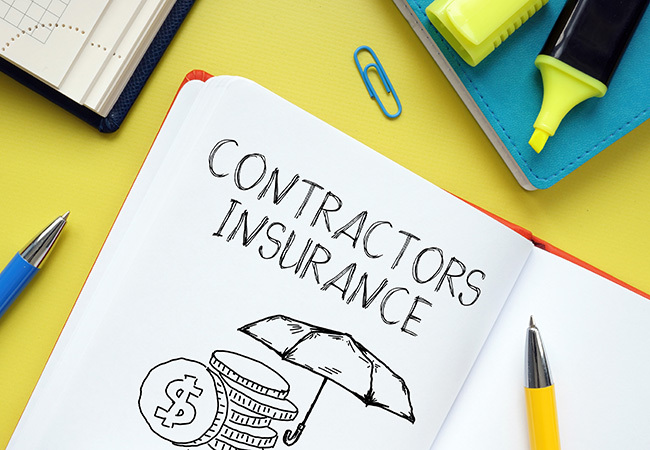The Top 9 Workplace Injuries and How to Prevent Them
The Importance of Workplace Safety and The Impact of Workplace Injuries on Employees and Employers
Workplace safety is crucial for both employees and employers. Workplace injuries not only cause physical pain and suffering to employees but also have a significant impact on their ability to work and their overall quality of life.
For employers, workplace injuries can result in increased costs, decreased productivity, and potential legal liabilities. Additionally, workplace injuries can damage the reputation of a company, which can lead to difficulty in attracting and retaining employees, and negatively impact the bottom line.
Therefore, prioritizing workplace safety is essential for creating a healthy and productive work environment and for the well-being of all employees and the success of the business.
Top Nine Workplace Injuries and Steps To Preventing Them
Strains and sprains are among the most common workplace injuries, accounting for nearly 40% of all workplace injuries. They occur when employees overexert or move inappropriately, causing damage to muscles, tendons, and ligaments. These injuries can be extremely painful and can limit an employee's ability to perform job duties. Employers can prevent strains and sprains by implementing ergonomics and safe lifting techniques, providing appropriate training, and ensuring that employees take breaks as needed.
Cuts and lacerations are another common workplace injury, especially in jobs that involve the use of sharp tools or machinery. These injuries can range from minor cuts to severe wounds that require medical attention. Employers can prevent cuts and lacerations by providing appropriate training and protective equipment, such as gloves and safety glasses, and maintaining equipment in good condition.
Slips, trips, and falls are a leading cause of workplace injuries, accounting for nearly 30% of all workplace injuries. These injuries occur when employees slip on wet or uneven surfaces, trip over objects, or fall from heights. Employers can prevent slips, trips, and falls by maintaining a clean and well-lit workspace, providing appropriate footwear, and implementing safety policies and procedures.
Bruises and contusions can result from a variety of workplace incidents, such as being struck by falling objects or colliding with equipment. While these injuries are typically less severe than others on this list, they can still cause significant pain and discomfort. Employers can prevent bruises and contusions by providing appropriate protective equipment and ensuring that equipment is properly secured and maintained.
Fractures and broken bones can occur from a variety of workplace incidents, such as falls or being struck by objects. These injuries can be extremely painful and can limit an employee's ability to work. Employers can prevent fractures and broken bones by implementing safety policies and procedures, providing appropriate protective equipment, and ensuring that employees are properly trained.
Burns can occur from exposure to hot surfaces or chemicals, or from fires and explosions. These injuries can range from minor burns to severe, life-threatening injuries. Employers can prevent burns by labeling and storing hazardous materials properly, implementing appropriate safety policies and procedures, and providing appropriate training and protective equipment.
Electrical shock and electrocution can occur when employees come into contact with live wires or faulty equipment. These injuries can be extremely dangerous and can even result in death. Employers can prevent electrical shock and electrocution by regularly inspecting and maintaining electrical equipment, using appropriate guarding and lockout/tag out procedures, and providing appropriate training.
Amputations can occur from a variety of workplace incidents, such as getting caught in machinery or being struck by objects. These injuries are extremely serious and can have long-term consequences for employees. Employers can prevent amputations by providing appropriate training and protective equipment, implementing safety policies and procedures, and ensuring that equipment is properly guarded and maintained.
Eye injuries can occur from exposure to chemicals, flying debris, or other hazards in the workplace. These injuries can range from minor irritation to serious, vision-threatening injuries. Employers can prevent eye injuries by providing appropriate eye protection, labeling and storing hazardous materials properly, and implementing safety policies and procedures.
Hearing loss can occur from exposure to loud noises in the workplace, such as from machinery or power tools. These injuries can be permanent and can significantly impact an employee's quality of life. Employers can prevent hearing loss by providing appropriate hearing protection, implementing noise control measures, and maintaining proper maintenance of machinery.
Work Injury Prevention Strategies
Employers can provide training to employees on how to lift heavy objects properly and safely. They can also provide equipment, such as lifting straps or carts, to reduce the risk of strain. Additionally, employers can evaluate workstations and make necessary ergonomic adjustments to reduce the risk of repetitive strain injuries.
Employers should ensure that employees receive appropriate training on safety policies and procedures, including how to properly use protective equipment such as gloves, safety glasses, and earplugs. Employers should also ensure that employees have access to appropriate protective equipment and that it is in good condition and fits properly.
Employers can reduce the risk of slips, trips, and falls by maintaining a clean and well-lit workspace. This includes regularly cleaning spills and debris, marking uneven surfaces, and providing appropriate warning signs. Employers can also ensure that work areas are well-lit to reduce the risk of accidents due to poor visibility.
Employers can develop and enforce safety policies and procedures to ensure that employees are aware of the risks associated with their work and how to prevent accidents. This includes regularly reviewing and updating policies and procedures, as well as providing regular training to employees.
Employers can create a culture of safety by encouraging employees to report hazards and near-misses. Employers should ensure that employees feel comfortable reporting safety concerns without fear of retribution, and should take action to address concerns in a timely manner.
Employers can reduce the risk of accidents due to employee fatigue by providing adequate break times. Employers should ensure that employees are not working long hours without adequate rest, and should provide appropriate facilities for rest and relaxation.
Employers can reduce the risk of accidents due to exposure to hazardous materials by properly labeling and storing them. Employers should ensure that employees are trained on how to properly handle hazardous materials and that appropriate safety equipment is available when necessary.
Employers can reduce the risk of electrical shock and electrocution by regularly inspecting and maintaining electrical equipment. Employers should ensure that equipment is properly grounded, that cords are not frayed or damaged, and that appropriate guarding is in place.
Employers can reduce the risk of amputations and other injuries due to machinery by using proper guarding and lockout/tagout procedures. Employers should ensure that employees are properly trained on how to safely operate machinery and how to properly lock out and tag out equipment during maintenance.
Employers can reduce the risk of hearing loss by providing appropriate hearing protection and implementing noise reduction measures. Employers should ensure that employees are aware of the risks associated with exposure to loud noise and that appropriate hearing protection is provided when necessary. Additionally, employers can implement noise reduction measures, such as sound barriers or noise-absorbing materials, to reduce the amount of noise in the workplace.
Recap the importance of preventing workplace injuries and the top nine injuries and prevention strategies covered in the post.
In summary, workplace safety is crucial for the well-being of employees and the success of businesses.
Workplace injuries can have significant impacts on employees, including physical pain, lost wages, and decreased quality of life. Employers also face financial and legal consequences, as well as decreased productivity and employee morale.
The top 9 workplace injuries and their prevention strategies are as follows:
Implement ergonomics and safe lifting techniques.
Provide appropriate training and protective equipment.
Maintain a clean and well-lit workspace.
Develop and enforce safety policies and procedures.
Encourage employees to report hazards and near-misses.
Provide adequate break times to prevent fatigue.
Label and store hazardous materials properly.
Regularly inspect and maintain electrical equipment.
Use proper guarding and lockout/tagout procedures.
Provide hearing protection and implement noise reduction measures.
By implementing these prevention strategies, employers can reduce the risk of workplace injuries and promote a culture of safety in the workplace.
This not only benefits employees but also employers by avoiding costly workers’ compensation claims and maintaining a productive and healthy workforce.
It’s essential for employers to prioritize workplace safety and take proactive measures to prevent workplace injuries. Not only is it the right thing to do for the well-being of their employees, but it can also help businesses avoid the financial and legal consequences that come with workplace injuries.
At OCMI Workers’ Comp, we understand the importance of workplace safety and offer a range of services to help businesses create a safe and healthy work environment.
Our team of experts can provide safety assessments, training programs, and risk management solutions tailored to your specific industry and business needs. We can also help with claims management and provide support for injured employees to ensure they receive the care they need and can return to work as soon as possible.
Investing in workplace safety is an investment in the success of your business. By partnering with OCMI Workers’ Comp, you can take proactive steps to prevent workplace injuries and create a culture of safety in your workplace.
Contact us today to learn more about our services and how we can help your business prioritize workplace safety.









